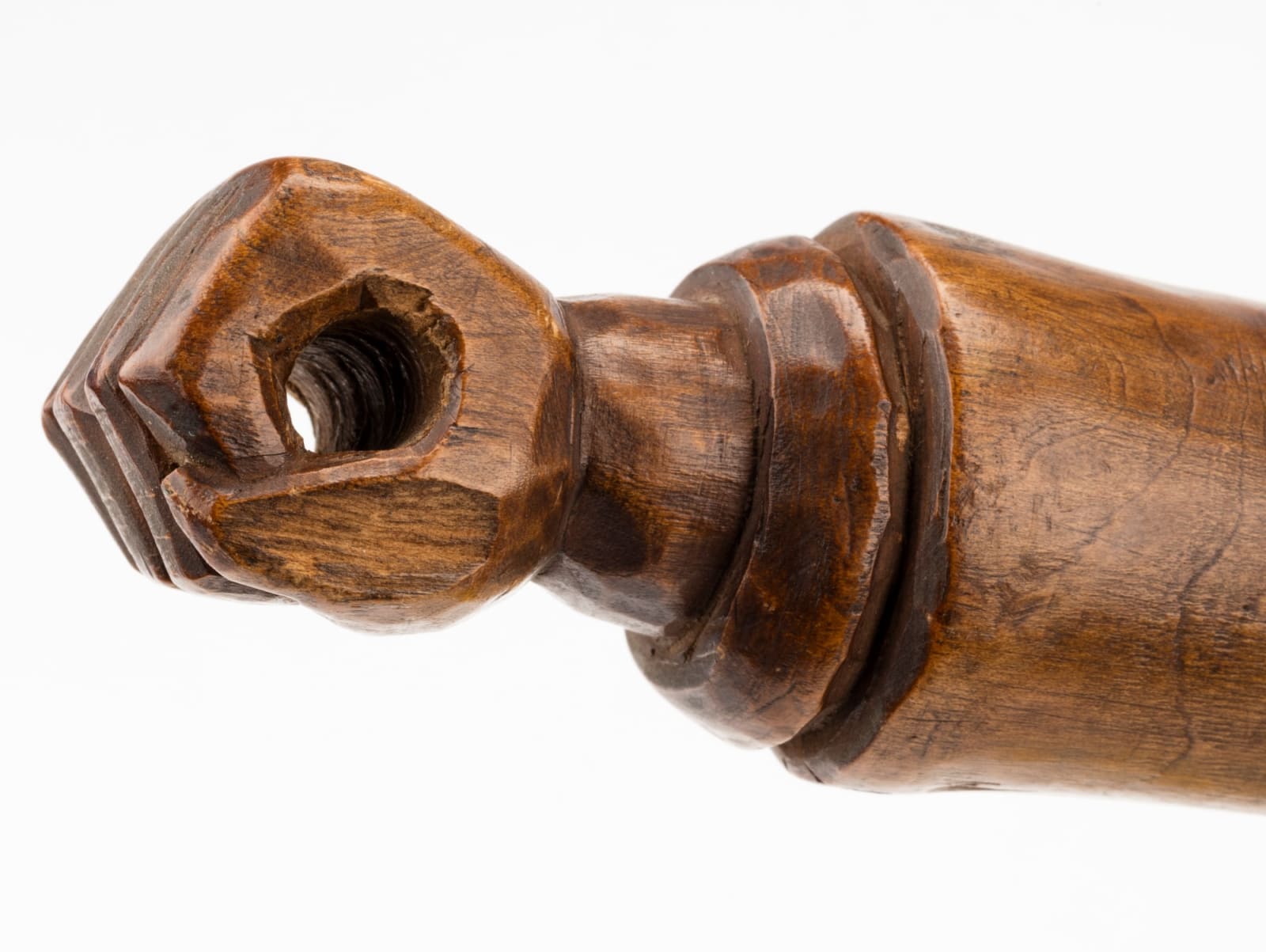-
Artworks
UNIDENTIFIED NUU-CHAH-NULTH ARTIST
Fish or Seal Club, 19th centurycarved and stained hardwood, 1.75 x 19.25 x 1.5 (4.4 x 48.9 x 3.8 cm), measurements reflect dimensions without custom made metal stand.LOT 143
ESTIMATE: $3,000 — $5,000
PRICE REALIZED: $2,580.00Further images
Wooden clubs were created to dispatch large fish; salmon and halibut, and pelagic fur seals that were hunted for their pelts. Clubs were sculpted with animal figures that were family...Wooden clubs were created to dispatch large fish; salmon and halibut, and pelagic fur seals that were hunted for their pelts. Clubs were sculpted with animal figures that were family crests or to honor the creatures that were the object of the hunt. This club displays three images, composed with a good deal of overlap between them. At the big end of the club is a bear, indicated by four legs, a toothed mouth, and small rounded ears. The next figure down is difficult to interpret and includes a pair of forelegs and a strongly arched forehead. The bottom figure is a whale, represented by pectoral fins pointing down from the back of its head, and a double fluked tail turned up against its body to lie beneath the chin. A small human hand is carved at the finial end of the club, with a channel cut through the gripping fingers to accommodate a lanyard for securing the club to the user’s wrist.
Steven C. Brown
References: Fish and seal clubs of similar design were used by a number of peoples on the Northwest Coast. See Bill Holm and William Reid, Form and Freedom: A Dialogue on Northwest Coast Indian Art, (Houston: Institute for the Arts, Rice University, 1975), no. 15; Bill Holm, The Box of Daylight: Northwest Coast Indian Art, (Seattle, WA: Seattle Art Museum/University of Washington Press, Seattle, 1983), cat. 152, p. 90. For a Haida or Tlingit example see Karen Duffek, Bill McLennan and Jordan Wilson, Where the Power Is: Indigenous Perspectives on Northwest Coast Art, (Vancouver: Figure 1 Publishing / Museum of Anthropology at UBC, 2021), p. 318. For a Tlingit example see Bill Holm, Northwest Coast Indian Art: An Analysis of Form, (Seattle: University of Washington Press, 1965), fig. 12, p. 17.Provenance
A Vancouver Collection.
Join our mailing list
* denotes required fields
We will process the personal data you have supplied in accordance with our privacy policy (available on request). You can unsubscribe or change your preferences at any time by clicking the link in our emails.












